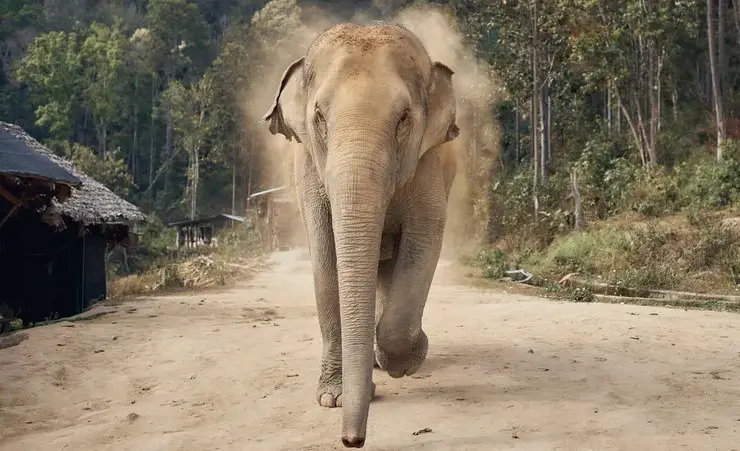Philippine tarsiers, known to exhibit self-destructive behavior in captivity, fatally injure themselves by smashing their heads against rocks
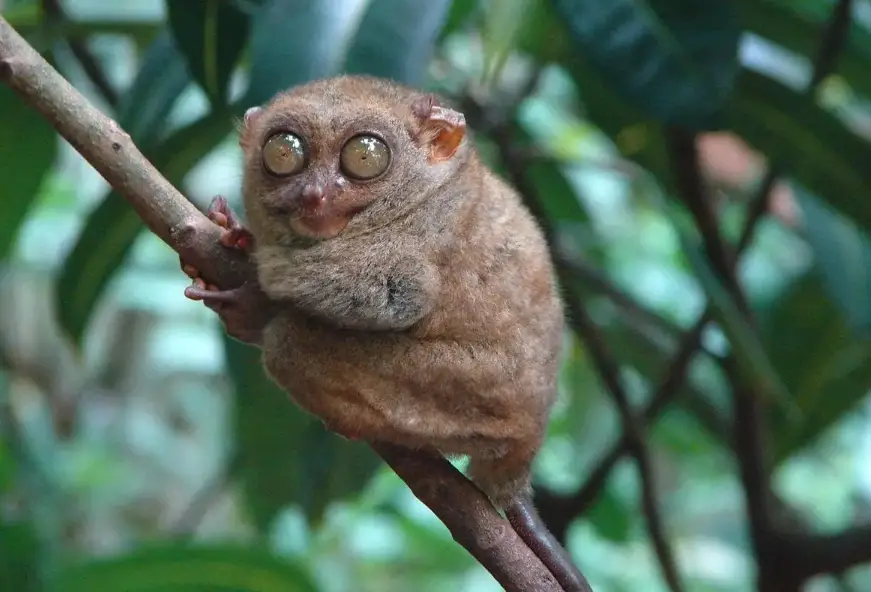
- Tarsiers, among the world’s smallest primates, exhibit extreme stress responses leading to self-inflicted death in captivity.
- Habitat destruction from deforestation and illegal logging has slashed populations by over 50% in the last two decades.
- Unregulated tourism and pet trade exacerbate risks, prompting urgent calls for enhanced wildlife conservation measures.
In the dense, mist-shrouded rainforests of the Philippine islands, a creature no larger than a human fist clings to survival with eyes that seem to pierce the veil of night.
The Philippine tarsier, known scientifically as Carlito syrichta, has long captivated scientists and nature enthusiasts with its otherworldly appearance—enormous, unblinking eyes that account for the largest eye-to-body ratio of any mammal, allowing it to spot prey in near-total darkness.
But beneath this enchanting facade lies a harrowing reality: these primates are so acutely sensitive to disruption that they have been observed engaging in behaviors akin to suicide when threatened or confined, a phenomenon that has alarmed conservationists worldwide.
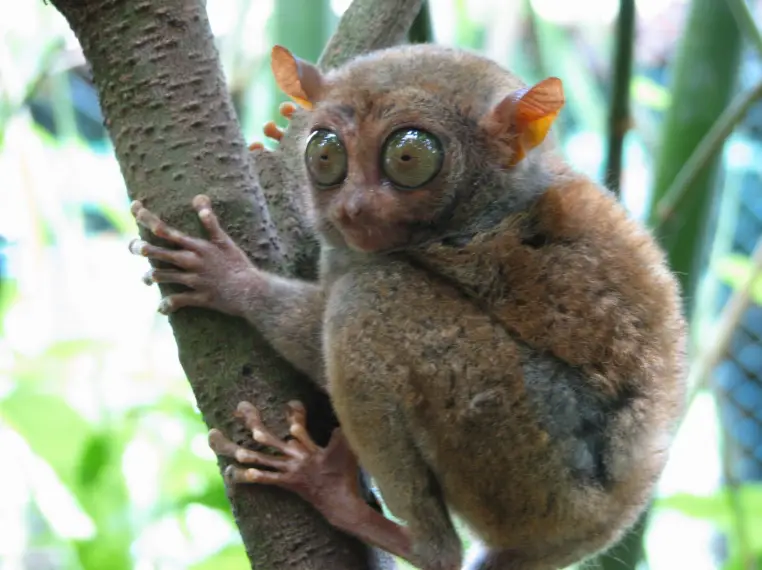
Imagine a animal so fragile that the mere flash of a camera or the clamor of human voices can push it over the edge.
Reports from wildlife sanctuaries in Bohol reveal that tarsiers, when subjected to prolonged stress, repeatedly bash their ultra-thin skulls against hard surfaces—tree branches, cage bars, or enclosure walls—until fatal injuries occur.
This self-destructive tendency isn’t mere anecdote; it’s rooted in their evolutionary wiring.
Adapted to solitary, nocturnal lives in high-humidity tropical environments, tarsiers thrive in seclusion, leaping up to 3 meters between bamboo shoots to hunt insects like crickets and grasshoppers.
Their elongated ankle bones, or tarsi, from which their name derives, enable these acrobatic feats, while a neck capable of 180-degree rotation compensates for eyes fixed rigidly in their sockets.
Yet, as human encroachment intensifies, these adaptations offer little defense.
Deforestation for agriculture and urban expansion has fragmented their habitats across islands like Samar, Leyte, and Mindanao, where tarsiers once roamed densities of up to 57 individuals per 100 hectares.
Now, in patches of secondary forest, they struggle against invasive predators such as feral cats, which prey on vulnerable young.
Adding to the peril, indigenous beliefs in regions like Sarangani have paradoxically shielded some populations—locals view tarsiers as harbingers of spirits, deterring hunters—but elsewhere, poaching for the exotic pet market thrives underground.
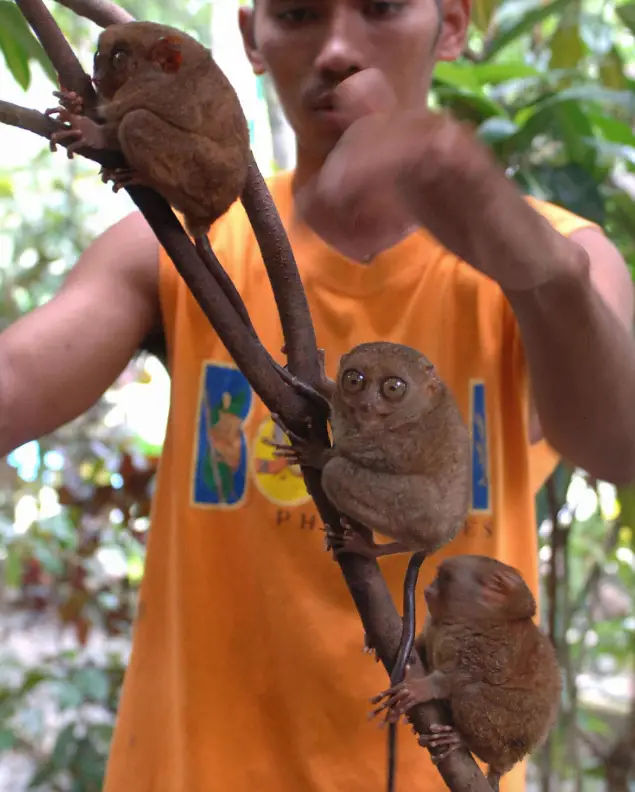
What drives a primate to such extremes? Behavioral ecologists point to the tarsier’s hyper-sensitive nervous system, honed for detecting the faintest rustle in the underbrush.
In captivity, even well-intentioned efforts can backfire. For instance, attempts to breed them in zoos often fail because females, after a six-month gestation, birth single offspring that require undisturbed nursing for 60 days.
Disruptions lead to abandonment or worse. Males, marking territories with urine and glandular scents, become aggressive or withdrawn when confined, escalating stress hormones to lethal levels.
The crisis escalated dramatically in early 2024 when a viral video surfaced showing a South Cotabato vlogger, known as Farm Boy, manhandling a tarsier in its natural habitat, laughing as the animal squirmed.
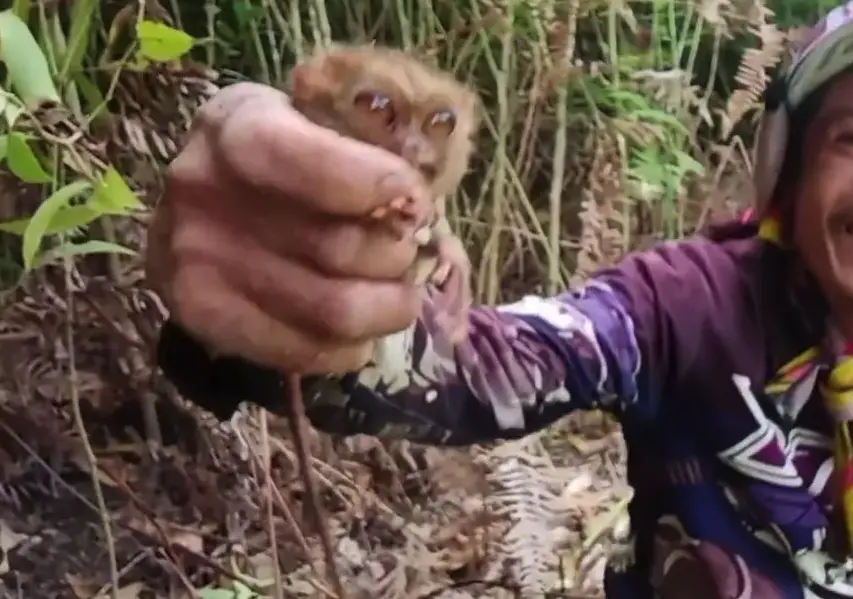
Environmental authorities launched an investigation, highlighting how such interactions—prohibited in sanctuaries—can trigger immediate distress.
Viewers recoiled at the footage, unaware that tarsiers’ ultrasound vocalizations, pitched at 70 kHz and beyond human hearing, signal panic in ways we can’t detect.
This incident wasn’t isolated; similar disturbances from ecotourism hotspots have been linked to population dips, with experts estimating only 700 tarsiers remain on Bohol alone.
Delving deeper, the tarsier’s plight intersects with broader biodiversity challenges in Southeast Asia.
Their diet, comprising small vertebrates like lizards alongside arthropods, positions them as key pest controllers in fragile ecosystems.
Lose them, and imbalances ripple through food chains. Reproduction rates, with sexual maturity at two years and seasonal mating from April to May, can’t keep pace with accelerating losses.
Females deposit mating plugs post-copulation, a unique trait ensuring paternity, but habitat scarcity means fewer safe birthing sites in tree hollows.
As threats mount, whispers of innovative rescues emerge. In Kansas, researchers have pioneered genetic mapping to identify new subspecies variations, potentially unlocking targeted protections.
But questions linger: Could climate shifts, altering humidity levels in their preferred low-elevation forests, amplify suicide risks?
| Key Fact | Detail |
|---|---|
| Scientific Name | Carlito syrichta |
| Size and Weight | 85-160 mm tall, 80-160 grams |
| Habitat | Tropical rainforests in Philippine islands like Bohol, Samar, Leyte |
| Conservation Status | Near Threatened (IUCN), with populations declining over 30% in 20 years |
| Major Threats | Deforestation, poaching, tourism disturbances |
| Unique Behavior | Nocturnal leaping, head rotation, stress-induced self-harm |
| Population Estimate | Around 700 in Bohol; total unknown but critically low |
| Diet | Insects, spiders, small lizards and birds |
Beyond the Philippine species, other tarsiers face parallel perils. The Siau Island tarsier, Tarsius tumpara, clings to critically endangered status on a volcanic Indonesian isle, where geothermal activity compounds habitat woes.
Pygmy tarsiers, rediscovered in Sulawesi after being presumed extinct, exhibit similar captivity intolerances, with jumps 40 times their body length offering fleeting escapes from human pressures.
These cousins underscore a family-wide vulnerability: tarsiers’ specialized niches make them bellwethers for primate extinction trends.
Conservation warriors, like those at the Philippine Tarsier Foundation, battle on multiple fronts.
Sanctuaries enforce no-touch policies, dim lighting, and silent viewing platforms to minimize impacts.
Reintroduction programs, though challenging due to high mortality rates—only 50% of captive tarsiers survive—show promise with enriched enclosures mimicking wild conditions.
International accords, including CITES Appendix II listings, curb trade, but enforcement lags in remote areas.

Recent outcries on social platforms amplify the urgency.
In April 2024, posts decried the vlogger’s antics, noting tarsiers’ propensity for head-banging under duress, a behavior echoed in 2025 discussions linking red panda interactions—oddly enough—to heightened anxiety in mixed exhibits.
Such cross-species insights hint at untapped research avenues: Might shared evolutionary traits reveal new stress mitigation strategies?
Yet, as illegal logging carves deeper into Mindanao’s forests, a chilling pattern emerges.
Tarsiers, once numbering in the thousands per island, now huddle in fragmented pockets, their chirping choruses fading.
Activists report spikes in black-market sales, where buyers remain oblivious to the animals’ doomed fates—self-inflicted or otherwise.
One sanctuary volunteer recounted a rescued tarsier that, despite rehabilitation, succumbed after days of relentless pacing.
The intrigue deepens with emerging studies on their ultrasonic communications. Males’ mating calls, inaudible to us, could hold clues to social structures disrupted by noise pollution from nearby resorts.
Imagine decoding these signals—could it revolutionize wildlife conservation approaches for other elusive primates?

In Bohol’s Corella sanctuary, rangers patrol under moonlit canopies, guarding against poachers who exploit the tarsiers’ value as “exotic novelties.”
Success stories trickle in: a mother-offspring pair released last year, tracked via non-invasive collars, thriving in restored bamboo groves.
But for every win, shadows loom—rumors of a new development project threatening Leyte’s last strongholds.
What if these tiny sentinels vanish entirely? Their absence would echo through Philippines biodiversity hotspots, potentially unraveling ecosystems reliant on their pest-control prowess.
As global attention turns to animal behavior anomalies, from elephant mourning rituals to cetacean strandings, tarsiers’ “suicide” puzzle beckons deeper inquiry: Is it instinctual escape, or a desperate cry against an encroaching world?
The fight intensifies with tech innovations—drones mapping untouched habitats, AI analyzing vocal patterns for early stress detection.
Yet, a pivotal question hangs: Will humanity heed the warning before the last tarsier leaps into oblivion, its fate sealed by our own hands?


















